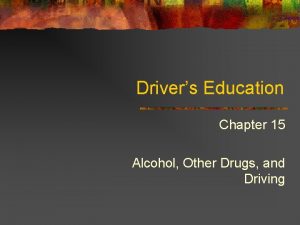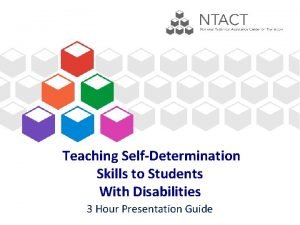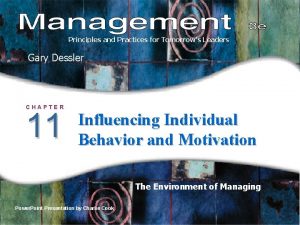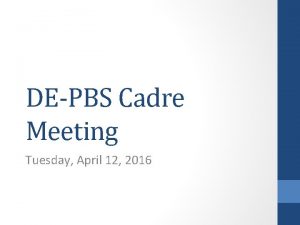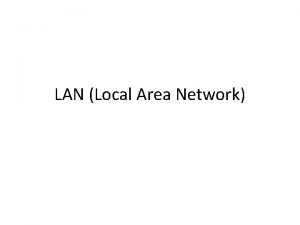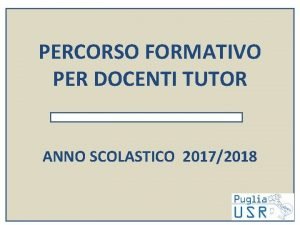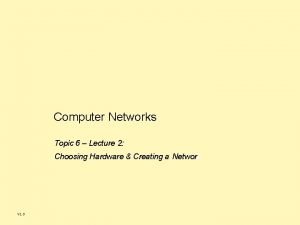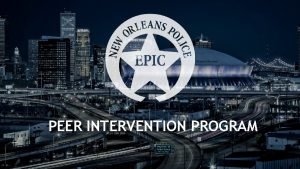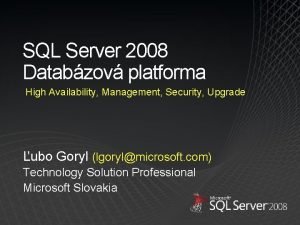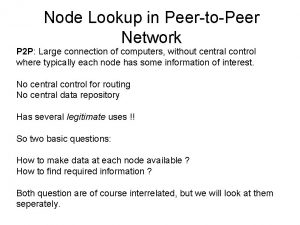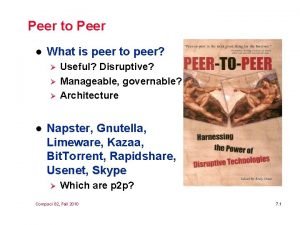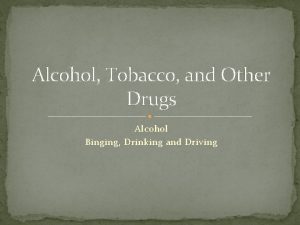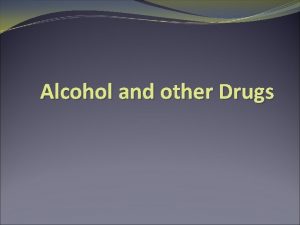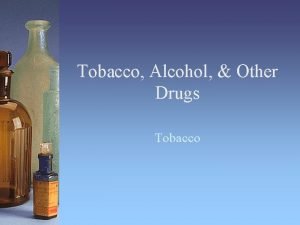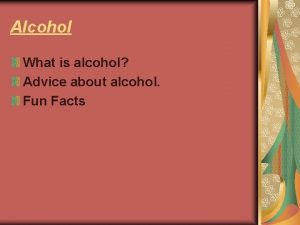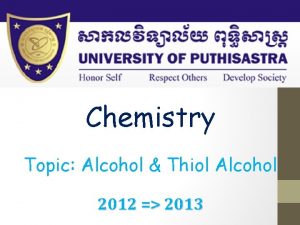TOMORROWS WORKFORCE Peer Workforce in Alcohol other Drugs



















- Slides: 19

TOMORROWS WORKFORCE Peer Workforce in Alcohol & other Drugs (AOD)

OUTLINE • SHARC and Peer Projects • What is an AOD Peer Worker? • Why Peer Work? - The evidence base • The AOD Peer Workforce – Victoria • AOD Peer Workforce Strategy • SHARC Peer Worker Model • Implementing a Peer Workforce – Key domains • Thriving Peer Workforce • Keys to Success

SHARC Self Help Addiction Resource Centre (SHARC) promotes self-help approaches to recovery from severe alcohol and drug related issues. • SHARC have been actively developing and implementing self-help and peersupport approaches to AOD recovery for over 30 years. • SHARC’s established peer workforce partnerships spread across a number of domains including justice, mental health, harm reduction and gambling related harm.

SHARC Peer Projects, a program of SHARC, supports the growth, development and sustainability of Victoria’s AOD peer workforce. We provide: • Peer Workforce Development and Support • Services include: peer worker training, supervision, organisational readiness, resource development and facilitation of the Victorian AOD Peer Workforce Community of Practice. • We facilitate the placement and support of Peer Workers across the state in a number of environments

WHAT IS AN AOD PEER WORKER? ‘A Peer Worker utilises their lived experience of alcohol and other drugs, plus skills learned in formal training, to deliver services in support of others’.

WHY PEER WORK? • The evidence base for peer work is strong in the Mental Health sector and useful parallels can be drawn. (see Gagne, C. A. , White, W. , & Anthony, W. A. (2007). Recovery: A common vision for the fields of mental health and addictions. Psychiatric Rehabilitation Journal, 32(10), 32 -37. ) • New Zealand studies have evidence for AOD Peer Work. They have found it effective, good value for money a valuable component of AOD service delivery that contributes positively to people’s recovery. (See King J, Panther G. (2014). Peer Support Themes. Report prepared for AOD Collaborative Group. Auckland: Julian King & Associates Limited – a member of the Kinnect Group. ) • Peer work benefits the people who use the service, the peer worker and the organisation.

THE AOD PEER WORKFORCE • DHHS Workforce Development has funded and supported AOD Peer Workforce Development • A clear framework for implementation and support has been developed an annual training calendar is in place • Many organisations are formalizing and integrating peer work into their service • Collaboration with mental health to develop workforce strategies for both workforces • The Victorian AOD Peer Workforce Community of Practice is thriving

THE AOD PEER WORKFORCE

IMPLEMENTING A PEER WORKFORCE Organisational Readiness Preparation & Planning Framework for Sustainability

KEY DOMAINS Organisation wide preparation is crucial for the successful implementation of a Peer Workforce. This includes: • Understanding the practice of peer work and the value it brings • Endorsement and encouragement by committees of management • Developing shared expectations about what peer workers actually do ‐ the tasks they are responsible for ‐ but more importantly, how peer workers go about their work.

KEY DOMAINS Considered planning • Development of the why and how • Liaising with other agencies and workforce development leads 4 Underpinned by considered Human Resources practices • Identification and training of staff champions • Positions are developed and operationalised in consultation with Peer Workers

KEY DOMAINS Framework for sustainability A framework for sustainability should be thought through prior to implementation. This may include: • Ensuring training and support is consistent with, and reflects, the role • Continued effort to emphasise, retain and value the distinctiveness of the peer work role • Provision of Peer Worker specific training, supervision, networking and ongoing professional development opportunities • Integration into organisational systems • Evaluation and reporting processes

THRIVING PEER WORKFORCE We create more peer roles Stakeholders see the value of peer workers Peer roles are welldefined and effectively recruited Peers thrive in their positions and add value for clients Training and Policy matches expectation of roles Managers, peers and colleagues understand the role King and Panther (2014)

SURVIVING PEER WORKFORCE We create more peer roles Stakeholders see peer workers as a liability Peer roles are poorly defined High turnover of peers Training and Policy contradicts realities of the role Managers, peers and colleagues disagree on what the role is King and Panther (2014)

KEYS TO SUCCESS • Recognition at a departmental and policy level of the value • Cross sector relationships – pathways and resources for mutual learning • Resourcing Peer Workforce Development for all sectors

SILOS

QUESTIONS?

THANK YOU CONTACT Peer Projects peersupport@sharc. org. au Self Help Addiction Resource Centre Inc. www. sharc. org. au

REFERENCES • King J, Panther G. (2014). Peer Support Themes. Report prepared for AOD Collaborative Group. Auckland: Julian King & Associates Limited – a member of the Kinnect Group. • Commonwealth of Australia, Department of the Prime Minister and Cabinet, National Ice Action Strategy 2015 • Gagne, C. A. , White, W. , & Anthony, W. A. (2007). Recovery: A common vision for the fields of mental health and addictions. Psychiatric Rehabilitation Journal, 32(10), 32 -37. • State of Victoria, Department of Health and Human Services, July 2018. Victoria’s alcohol and other drugs workforce strategy 2018– 2022. • State of Victoria, Department of Health and Human Services, May 2013 Victorian Alcohol and Drug Treatment Principles. • Intergovernmental Committee on Drugs, July 2014, National Alcohol and other Drug Workforce Development Strategy 2015– 2018 (A Sub-strategy of the National Drug Strategy 2010– 15)
 Chapter 15 alcohol other drugs and driving
Chapter 15 alcohol other drugs and driving Alcohol and other drugs
Alcohol and other drugs Drinking black coffee drivers ed
Drinking black coffee drivers ed Chapter 15 alcohol other drugs and driving
Chapter 15 alcohol other drugs and driving Planning alternative tomorrows with hope
Planning alternative tomorrows with hope All tomorrows mbti
All tomorrows mbti Planning alternative tomorrows with hope
Planning alternative tomorrows with hope Tomorrow's technology and you
Tomorrow's technology and you Sjacl
Sjacl Tomorrows doctors
Tomorrows doctors Peer to peer transactional replication
Peer to peer transactional replication Jaringan peer to peer diistilahkan dengan
Jaringan peer to peer diistilahkan dengan Peer to peer vorteile nachteile
Peer to peer vorteile nachteile Registro peer to peer compilato
Registro peer to peer compilato Peer to peer network hardware
Peer to peer network hardware Peer intervention program
Peer intervention program Features of peer to peer network and client server network
Features of peer to peer network and client server network Peer to peer transactional replication
Peer to peer transactional replication Addresss look up
Addresss look up Peer to peer l
Peer to peer l



